 Hirame is a high-quality fish that goes for at least US $50 per kilogram. It can even exceed US $80 per kilogram, depending on the timing and the fish’s body.
Hirame is a high-quality fish that goes for at least US $50 per kilogram. It can even exceed US $80 per kilogram, depending on the timing and the fish’s body.
Hirame is a typical shiromi (white meat fish) when winter is approaching and a great sushi topping to start off a meal. Also, the taste is so delicate that the original flavor can be cancelled out just by adding too much soy sauce. How the chef expresses this delicate taste is a tribute to his skill and something that foodies look forward to.
In the US, Hirame is often written as “halibut” on the menu of sushi restaurants. Technically the English name of Hirame is Bastard halibut. Hailbut (referring to Pacific halibut) is called “Ohyo” in Japanese. In Japan, the engawa of massive Ohyo is often used as a substitute for Hirame engawa at conveyor belt sushi, but the two are not confused for each other. There is no mistake that Hirame is related to halibut, but they are completely different species. Incidentally, the price of Ohyo is US $3 to $20 per kilogram. It is incomparably cheaper than Hirame.
Also, depending on the restaurant it may be represented in a variety of other ways such as fluke, flatfish and flounder. These terms refer to relatives of Hirame (鮃) or Karei (鰈), but do not indicate any certain species of fish. In other words, there is generally no distinction between Hirame and Karei in the US and to go even further, all white fish are thought to be the same species.
The delicious taste of fish is dependent on the distribution of fat and the amount of inosinic acid. Therefore, fish taste better in the seasons when they have fattened up. On the other hand, people have a hard time distinguishing between types of fish when comparing the tastes of the parts with less fat. The free amino acids in fish meat differ only slightly between different types of fish. In other words, the flavor of all fish is mostly the same. It is only the amount of fat and the amount of the umami component, inosinic acid, that differ between fish, so apparently even sushi chefs cannot distinguish between fish just by eating the back part, which has a low fat content.
This is part of the reason why in the US all white fish is all lumped into the same category and to top it off, the common consensus there is that white fish has no flavor.
At sushi restaurants in Japan, generally there are at least two types of white fish on offer. It is practically guaranteed that Hirame will be in stock in winter. The light flavor unique to this white meat that spreads with each bite maximizes the aroma and sweetness of the vinegared rice. Recently, white fish with high levels of fat such as Kinmedai and Nodoguro, have become standard, high-quality white fish.
The difference between how even these sorts of white fish are handled in the US and Japan is astonishing. That said, flavorless Hirame is not consumed as sashimi or sushi even in Japan. It is served in dishes with strong flavors, like carpaccio. It’s possible that delicious Hirame is just not available in the US.
Related contents: List of White flesh fish
We hope this information will be helpful.

Revision date: July 16, 2022
Share this article
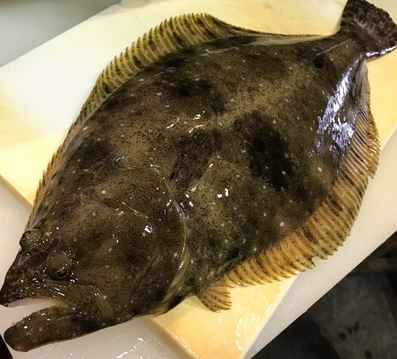 Hirame is a high-quality fish that goes for at least US $50 per kilogram. It can even exceed US $80 per kilogram, depending on the timing and the fish’s body.
Hirame is a high-quality fish that goes for at least US $50 per kilogram. It can even exceed US $80 per kilogram, depending on the timing and the fish’s body.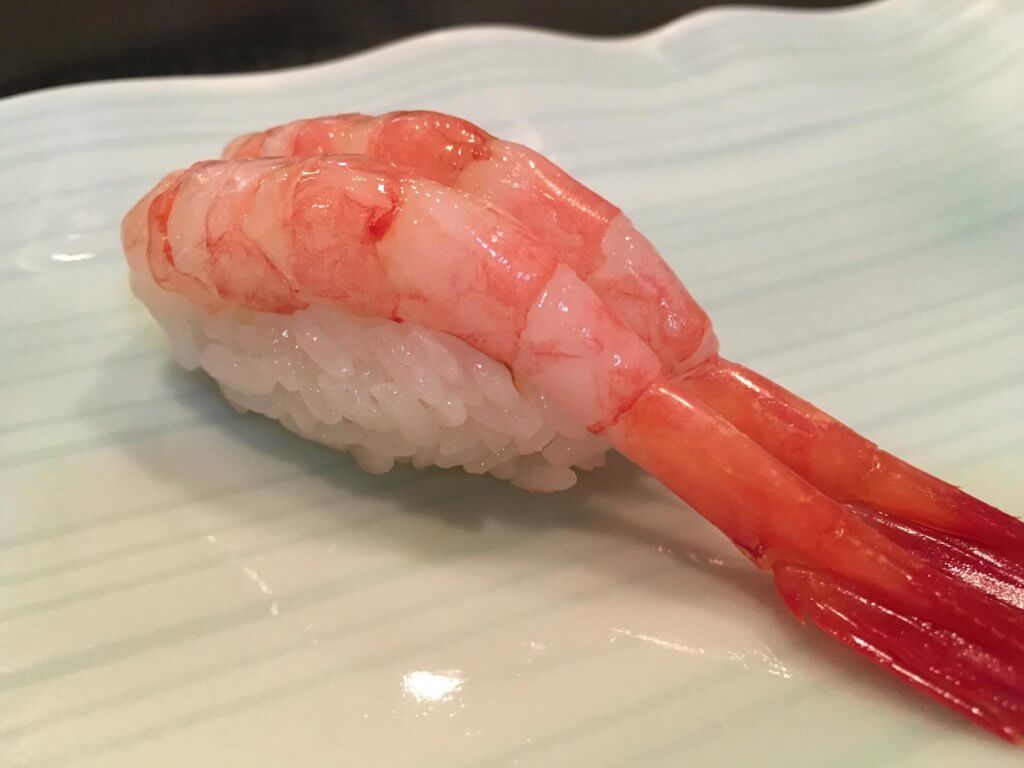 It goes without saying, that each type of fish has its very own scientific name. However, in places like the Toyosu Fish Market, there are seafoods that end up sharing a name.
It goes without saying, that each type of fish has its very own scientific name. However, in places like the Toyosu Fish Market, there are seafoods that end up sharing a name.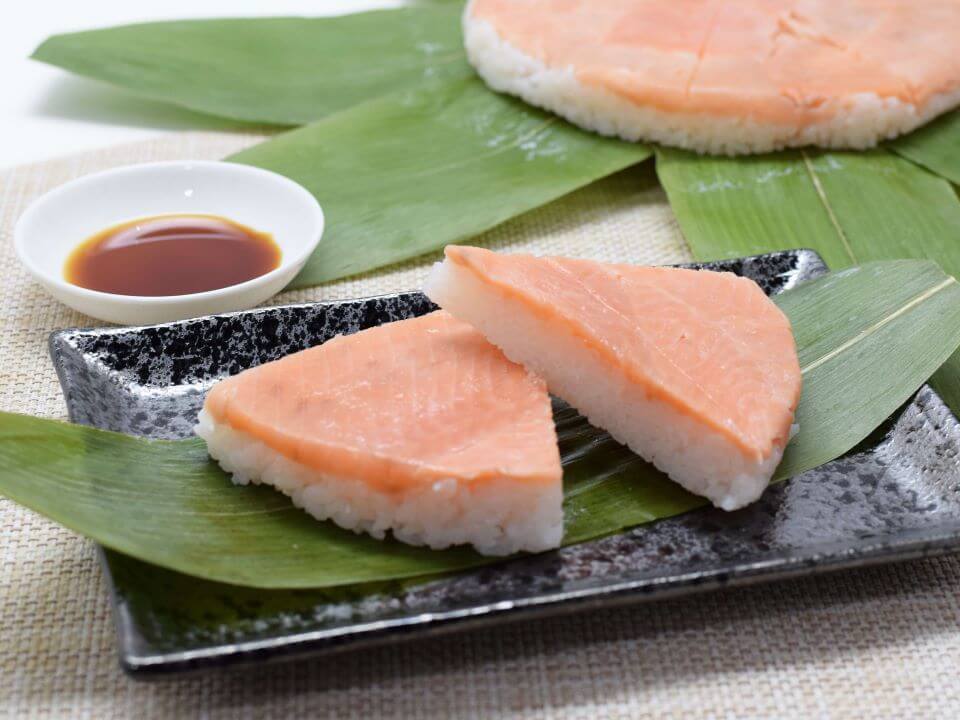 The origin of Masuzushi dates back about 300 years. Apparently, in 1717 it was first presented as
The origin of Masuzushi dates back about 300 years. Apparently, in 1717 it was first presented as 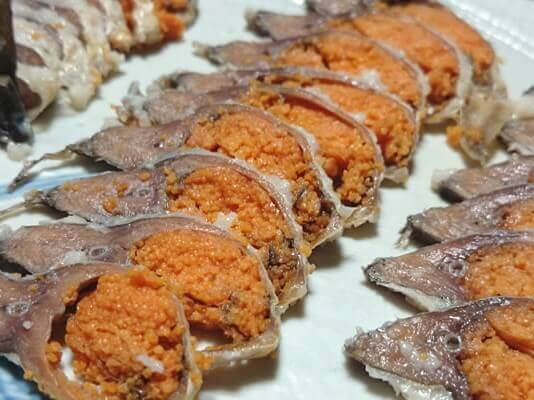 Narezushi (mainly a preserved food in which fish undergoes lactic fermentation with salt and rice), in which Sushi finds its roots, can still be found even today throughout Japan. The most famous is Funazushi (鮒寿司, 鮒鮓, 鮒寿し) in Shiga prefecture.
Narezushi (mainly a preserved food in which fish undergoes lactic fermentation with salt and rice), in which Sushi finds its roots, can still be found even today throughout Japan. The most famous is Funazushi (鮒寿司, 鮒鮓, 鮒寿し) in Shiga prefecture.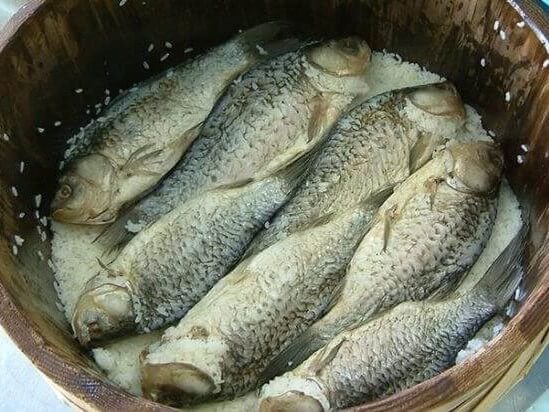 Making Funazushi sushi is surprisingly simple. The only ingredients are crucian carp caught in
Making Funazushi sushi is surprisingly simple. The only ingredients are crucian carp caught in 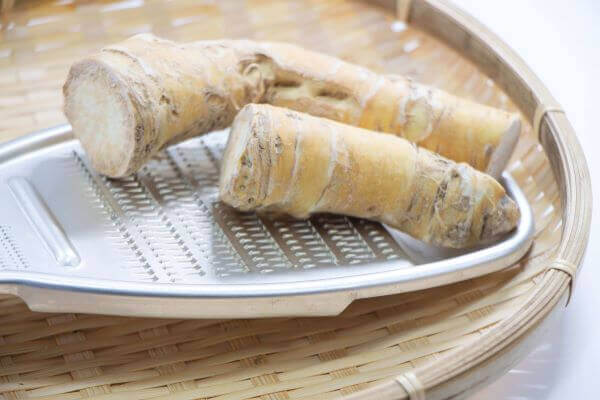
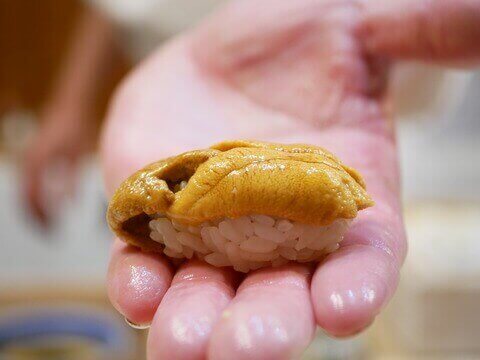 In Japanese, when a compound word is made out of two individual words, and the first consonant of the second word changes from a “clear sound” to a “fuzzy sound”, it is called “Rendaku”. For example, Edomae (江戸前) + sushi (寿司) changes to Edomaezushi (江戸前寿司). However, the correct pronunciation is only generalized among Japanese people, so in this book we chose the most commonly searched version of each compound word.
In Japanese, when a compound word is made out of two individual words, and the first consonant of the second word changes from a “clear sound” to a “fuzzy sound”, it is called “Rendaku”. For example, Edomae (江戸前) + sushi (寿司) changes to Edomaezushi (江戸前寿司). However, the correct pronunciation is only generalized among Japanese people, so in this book we chose the most commonly searched version of each compound word.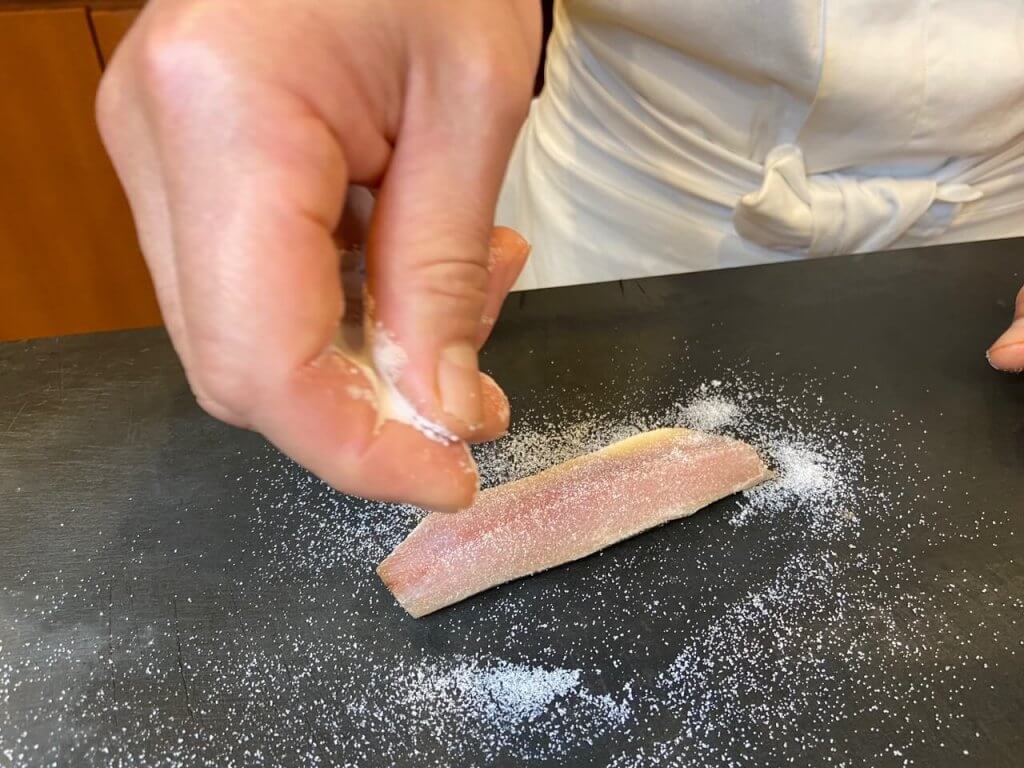
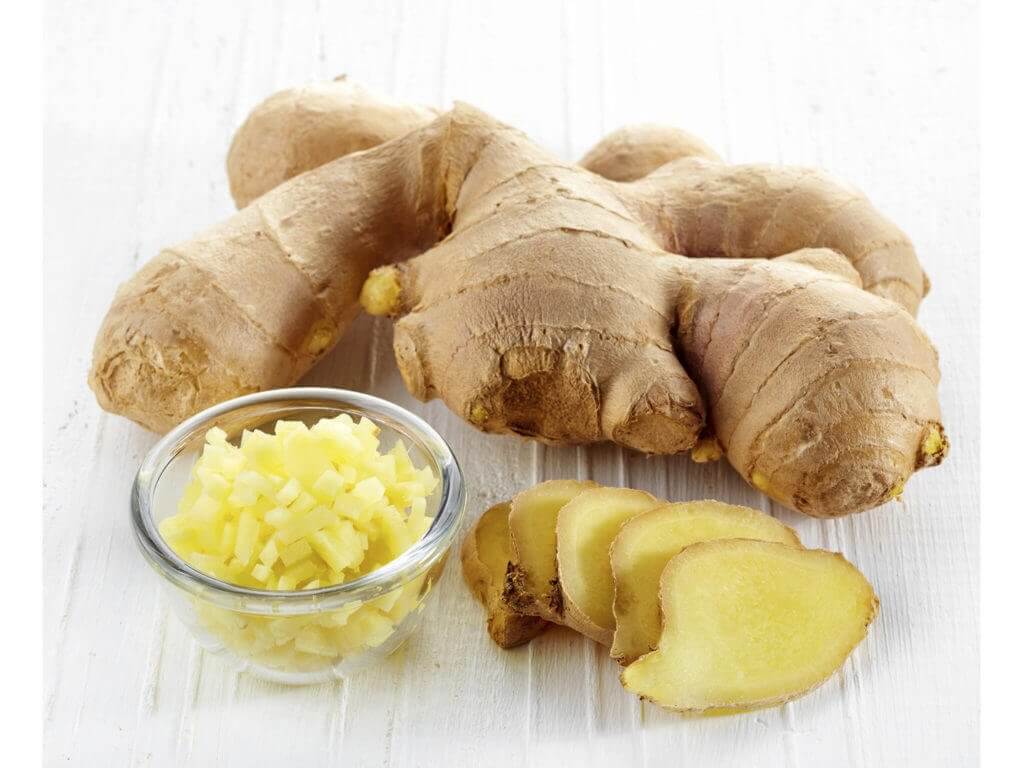 Sashimi essentials such as wasabi, ginger, karami-daikon, etc., are collectively called “Karami”. Originally Karami was a type of Tsuma. From the mid to late Edo period, Karashi (mustard) was mainly used for karami in sashimi. Eventually, due to the influence of Edomae sushi, wasabi became the norm. For sashimi such as bonito and sardines, wasabi isn’t enough to offset the peculiar aroma. In some cases, it is better to use ginger, which works on the root components of the odor. These types of fish have the best flavor once spring has passed, and interestingly enough, wasabi is least prevalent in summertime, while ginger is in peak season. Mother nature seems to know what she’s doing.
Sashimi essentials such as wasabi, ginger, karami-daikon, etc., are collectively called “Karami”. Originally Karami was a type of Tsuma. From the mid to late Edo period, Karashi (mustard) was mainly used for karami in sashimi. Eventually, due to the influence of Edomae sushi, wasabi became the norm. For sashimi such as bonito and sardines, wasabi isn’t enough to offset the peculiar aroma. In some cases, it is better to use ginger, which works on the root components of the odor. These types of fish have the best flavor once spring has passed, and interestingly enough, wasabi is least prevalent in summertime, while ginger is in peak season. Mother nature seems to know what she’s doing.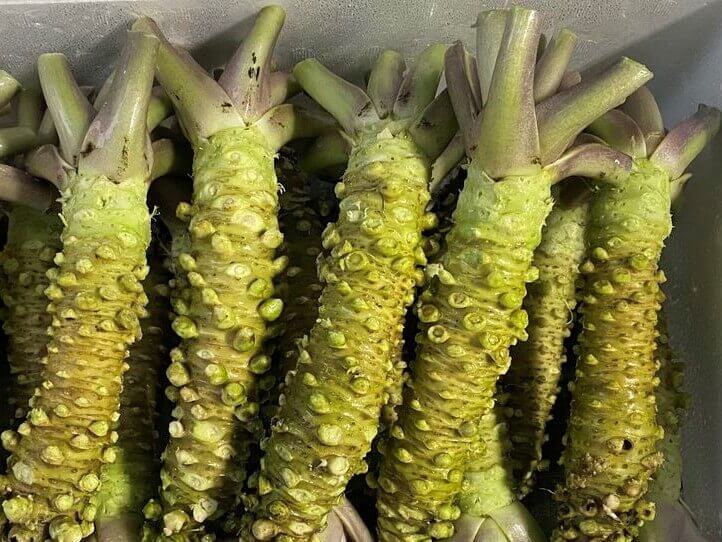 So, what is the true meaning of the shocking phrase, “Once you try tuna or flounder with this wasabi, you’ll never be able to eat it without wasabi again”?
So, what is the true meaning of the shocking phrase, “Once you try tuna or flounder with this wasabi, you’ll never be able to eat it without wasabi again”?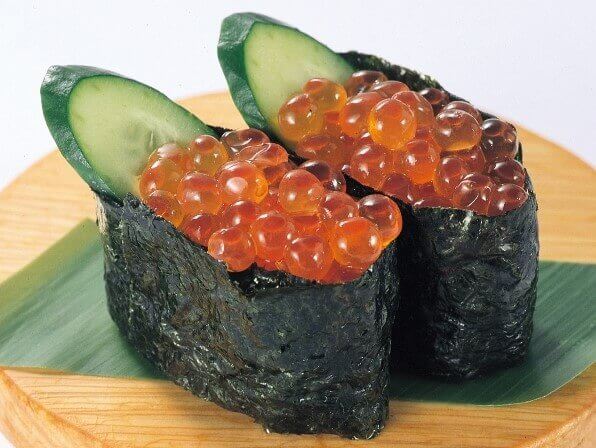 Immature salmon eggs still wrapped in ovarian membrane and salted are called sujiko. Ikura is salmon roe in which each mature egg is separated from the ovarian membrane before laying the eggs and then salted or marinated in soy sauce. The ikura of Chum salmon going upstream in the Kushiro River and Tokachi River in Hokkaido From October to December are considered to be premium ikura.
Immature salmon eggs still wrapped in ovarian membrane and salted are called sujiko. Ikura is salmon roe in which each mature egg is separated from the ovarian membrane before laying the eggs and then salted or marinated in soy sauce. The ikura of Chum salmon going upstream in the Kushiro River and Tokachi River in Hokkaido From October to December are considered to be premium ikura.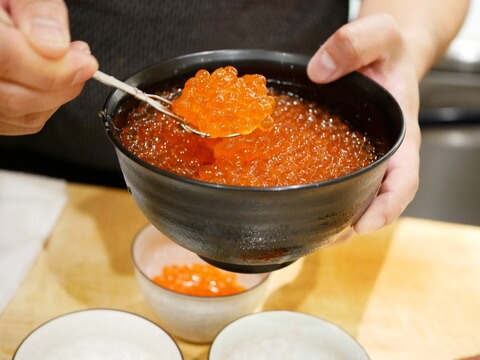 In Japan, salmon roe that has been separated from the ovarian membrane and then salted is called ikura. At sushi restaurants, this is also marinated in broth that includes soy sauce, mirin and sake. This is called ikura marinated in soy sauce, or simply ikura. Worldwide, caviar is considered to be of more value than ikura. Therefore, in an attempt to improve the impression of soy sauce-marinated ikura, it is sometimes called ‘salmon caviar’. This is behavior especially seen among manufacturers selling soy sauce-marinated ikura.
In Japan, salmon roe that has been separated from the ovarian membrane and then salted is called ikura. At sushi restaurants, this is also marinated in broth that includes soy sauce, mirin and sake. This is called ikura marinated in soy sauce, or simply ikura. Worldwide, caviar is considered to be of more value than ikura. Therefore, in an attempt to improve the impression of soy sauce-marinated ikura, it is sometimes called ‘salmon caviar’. This is behavior especially seen among manufacturers selling soy sauce-marinated ikura.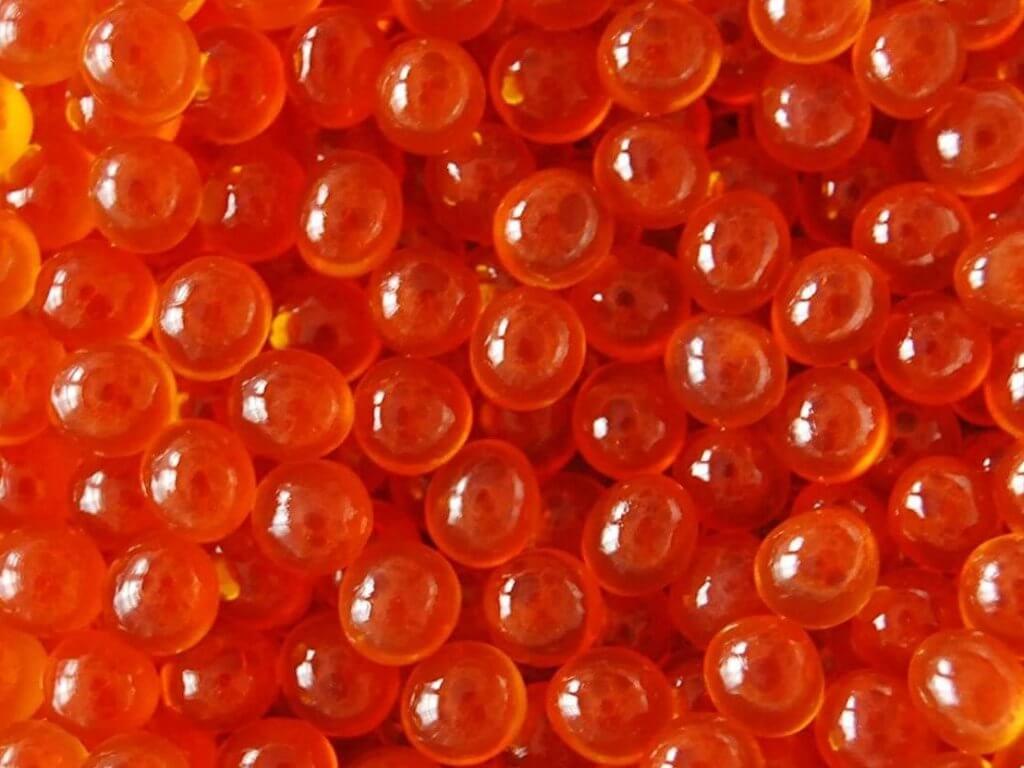 Not to belabor the point, but the following is dependent on the following. In Japanese salmon is referred to as “鮭” (sake/salmon) or “鱒” (masu/trout). The characters look different, but they are part of the same family and there aren’t clear biological categories to separate them into. Incidentally, in English the type that makes their way into the sea are called “salmon,” and those that remain in freshwater their entire lives are known as, “trout.” They are all considered to be part of the salmon family. Now, foreigners who know about Japan may imagine Japanese sake (the alcoholic beverage) when they hear the word “sake” so we spell sake/salmon as “shake”, which is close to the sound pronounced by Japanese people.
Not to belabor the point, but the following is dependent on the following. In Japanese salmon is referred to as “鮭” (sake/salmon) or “鱒” (masu/trout). The characters look different, but they are part of the same family and there aren’t clear biological categories to separate them into. Incidentally, in English the type that makes their way into the sea are called “salmon,” and those that remain in freshwater their entire lives are known as, “trout.” They are all considered to be part of the salmon family. Now, foreigners who know about Japan may imagine Japanese sake (the alcoholic beverage) when they hear the word “sake” so we spell sake/salmon as “shake”, which is close to the sound pronounced by Japanese people. Ken is considered to be better the longer and thinner it is, but this is a mistake. Not only is Ken tangled and difficult to eat, but it also doesn’t give any sense of the flavor of the materials. It’s long been said that 10 cm is a reasonable length and this is also the length that looks the most refined.
Ken is considered to be better the longer and thinner it is, but this is a mistake. Not only is Ken tangled and difficult to eat, but it also doesn’t give any sense of the flavor of the materials. It’s long been said that 10 cm is a reasonable length and this is also the length that looks the most refined.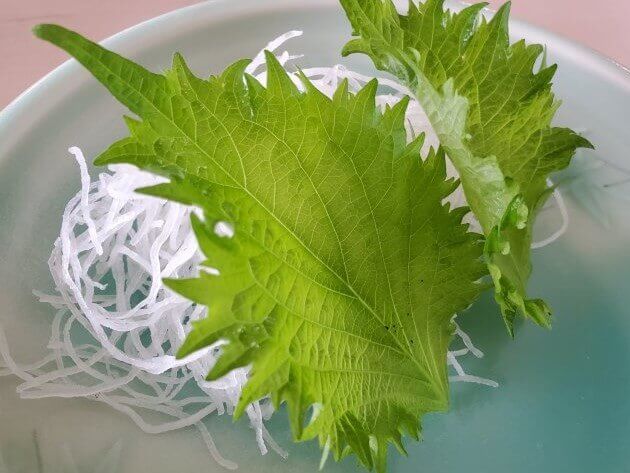 There are a few types of Tsuma. One is Shikitsuma (pronounced ‘shikizuma’ in Japanese) which consists of things like green shiso and cucumber leaves that sashimi is laid on. Another is Metsuma (pronounced ‘mezuma’ in Japanese) which is made from aome and murame. The final is Tatetsuma (pronounced ‘tatezuma’ in Japanese) used to prop sashimi up like hanahojiso and hanamaru kyuri. All Tsuma is served to bring out the charm of sashimi.
There are a few types of Tsuma. One is Shikitsuma (pronounced ‘shikizuma’ in Japanese) which consists of things like green shiso and cucumber leaves that sashimi is laid on. Another is Metsuma (pronounced ‘mezuma’ in Japanese) which is made from aome and murame. The final is Tatetsuma (pronounced ‘tatezuma’ in Japanese) used to prop sashimi up like hanahojiso and hanamaru kyuri. All Tsuma is served to bring out the charm of sashimi.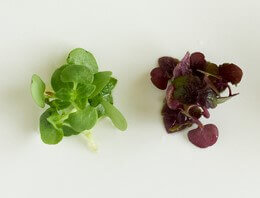
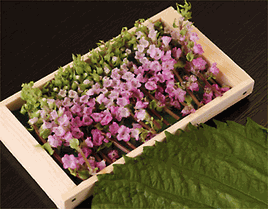
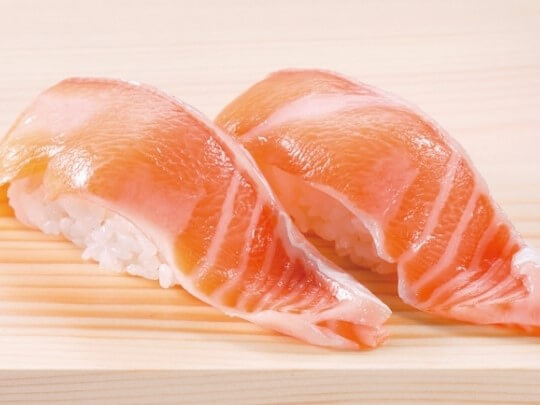 You probably already know this, but “toro tuna” is not the name of a type of fish. “Toro” is the name of a fatty part of the tuna. The fat content and attributes of the belly side of the tuna are completely different from that of the dorsal side. Toro is the name of the part near the head, mostly on the belly side.
You probably already know this, but “toro tuna” is not the name of a type of fish. “Toro” is the name of a fatty part of the tuna. The fat content and attributes of the belly side of the tuna are completely different from that of the dorsal side. Toro is the name of the part near the head, mostly on the belly side.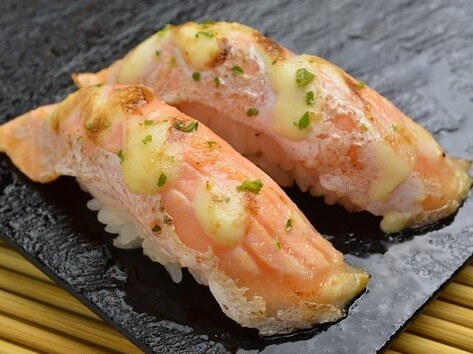 The Donaldson trout is farmed throughout Japan and is used as toro salmon and aburi salmon at conveyor belt sushi restaurants. Since they are supplied directly to the processor (of the salmon) from the farmer without going through the market, they may be sold cheaper than the import price. Just like the imported salmon, this farmed salmon is also fed artificial coloring. There are also already new variants improved from the Donaldson trout being bred. Trout made from breeding Donaldson trout females and steelhead males are called Donaldson steelhead, for instance. They grow even faster.
The Donaldson trout is farmed throughout Japan and is used as toro salmon and aburi salmon at conveyor belt sushi restaurants. Since they are supplied directly to the processor (of the salmon) from the farmer without going through the market, they may be sold cheaper than the import price. Just like the imported salmon, this farmed salmon is also fed artificial coloring. There are also already new variants improved from the Donaldson trout being bred. Trout made from breeding Donaldson trout females and steelhead males are called Donaldson steelhead, for instance. They grow even faster.